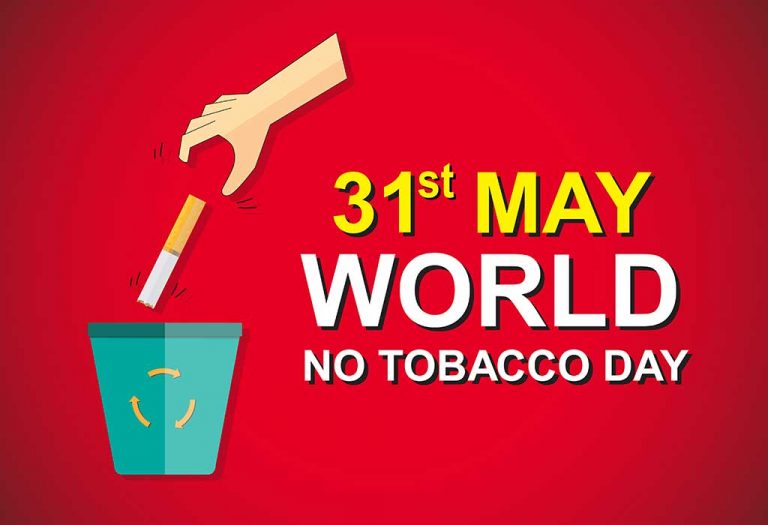
May 31 every year, the global community commemorates World No-Tobacco Day. It is a day set aside by the United Nations (UN) General Assembly to create awareness on the dangers inherent in tobacco intake.
The theme for the No Tobacco Day 2022 is ‘Tobacco: Threat to our planet‘. It marks the impact of tobacco on our environment from cultivation, production, distribution and waste after consuming it.
The BBC English Dictionary defines tobacco as ‘the dried leaves of a particular plant which people smoke in pipes, cigars, and cigarettes.’ The products of the tobacco leaves can also be referred to as ‘tobacco’. In the same vein, tobacco smoking is the act or habit of smoking tobacco leaves or any of its products to include cigarette, cigar, snuff, et cetera.
Register for Tekedia Mini-MBA edition 19 (Feb 9 – May 2, 2026): big discounts for early bird.
Tekedia AI in Business Masterclass opens registrations.
Join Tekedia Capital Syndicate and co-invest in great global startups.
Register for Tekedia AI Lab: From Technical Design to Deployment (next edition begins Jan 24 2026).
There are a number of types of tobacco in existence. It is noteworthy that any of the types involved contains unwholesome substances, which cause untold harm to the body. In 2008, the World Health Organization (WHO) named tobacco as the world’s single greatest cause of preventable deaths.
Tobacco smoke contains many chemicals that are harmful to both smokers and non-smokers. Research shows that inhaling even a little tobacco smoke can be harmful to the body. This is why among the various means of consuming tobacco leaves, which include sniffing, smoking, chewing and stuffing, smoking remains the most dangerous and delicate.
Scientifically, the survey indicates that, of the more than 7,000 chemicals in tobacco smoke, at least 250 including hydrogen cyanide, carbon monoxide and ammonia are known to be harmful. Among the 250 known harmful chemicals in tobacco smoke, at least 69 can cause cancer, especially in the lung, kidney, mouth, larynx, esophagus, bladder, pancreas and cervix.
Tobacco smokers are exposed to variety of risks or health complications namely: blood clots and aneurysms in the brain which can lead to stroke, blood clots in the legs which may travel to the lungs, coronary artery disease including angina and heart attacks, high blood pressure, poor blood supply to the legs, problems with erections due to decreased blood flow into the penis.
Other health risks or problems are poor wound healing especially after surgery, asthma, problems during pregnancy such as babies born at low birth weight, premature labour, miscarriage and cleft lip; decreased ability to taste and smell, harm to sperm which contributes to infertility, loss of sight as a result of an increased risk of mascular degeneration, tooth and gum diseases as well as wrinkling of the skin.
Smokers who switch to smokeless tobacco instead of quitting tobacco intake completely still have a number of health risks to include increased risk of mouth or nasal cancer, gum problems, tooth wear, cavities, worsening high blood pressure, and angina. Those who do not smoke or take any form of tobacco but always stay around smokers are also exposed to some health issues such as heart attack and other heart diseases, lung cancer and sudden reactions involving the eye, nose, throat, and lower respiratory tract.
Infants and children who are regularly exposed to secondhand smoke are not left out. They can easily contract asthma, infections like virus-caused upper respiratory diseases, ear infections and pneumonia; lung damage or poor lung function, as well as Sudden Infant Death Syndrome (SIDS).
Obviously, the aforementioned consequences are good reasons to quit the intake of tobacco. Like any addiction, quitting tobacco is not an easy task, especially when the person involved is acting alone. If one intends to quit smoking or intake of tobacco, family members, friends and coworkers may be supportive.
He can also talk to his health care provider concerning nicotine replacement therapy and smoking cessation medications. More so, if he or she joins smoking cessation programmes, which are often offered by hospitals, health departments, community centres and work sites, he would have a much better chance of success.
The bitter fact is that the global tobacco epidemic kills nearly six million people each year, of which more than 600,000 are non-smokers dying from breathing secondhand smoke.
Unless we act, according to WHO, the epidemic is likely to kill more than eight million persons annually by the year 2030; and more than eighty percent (80%) of these preventable mortality rates will be among people living in low and middle income countries like Nigeria.
It is, therefore, the responsibility of every Nigerian to acknowledge that the dangers of tobacco intake can only be avoided if its addicts as well as illicit traffickers holistically desist from such uncalled acts.
Similarly, the National Tobacco Control bill that was recently passed into law by the National Assembly (NASS) is indeed a welcome development that ought to be encouraged by any concerned authority such as National Drug Law Enforcement Agency (NDLEA) or anyone who thinks good of Nigeria.



